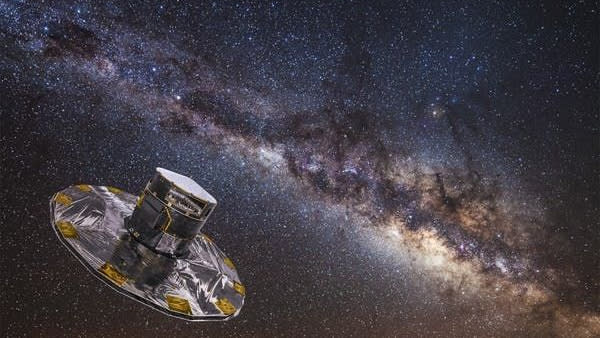When you buy through links in our articles, Future and its distribution partners may earn a commission.

In the eleventh year of his mission, the European Space Agency (ESA) Gaia Space Telescope suffered some technical problems. The telescope passed its time in space by accurately measuring the positions and movements of distant stars, offering an immense benefit to astronomers.
The ESA said Gaia first suffered a puncture caused by a fast-moving micrometeoroid and then an electronic malfunction. Because of these problems, the telescope began sending its ground-based operators gigabytes of useless data.
“Gaia typically sends more than 25 gigabytes of data to Earth every day, but that amount would be much, much greater if the software onboard the spacecraft did not first eliminate false star detections,” said Edmund Serpell, operations engineer at Gaia. Gaia’s spacecraft, in an affirmation. Serpell and his fellow engineers had to frantically deal with the problems.
Gaia is in L2 – the Lagrange point approximately 1.5 million kilometers (940,000 miles) away from Earth. This point resides in Earth’s shadow, where our planet’s gravitational pull balances out. the sun‘s. Out there, without even a trace of Earth’s atmosphere to burn them, high-speed micrometeoroids are a common threat. And although Gaia has a protective thermal tent Designed in part to protect the observatory from such micrometeoroids, one managed to get through.
Related: New Gaia telescope data reveals ‘gold mine’ of over 500,000 undiscovered stars and more
In April, a piece of space dust tore a hole in Gaia’s shielding enough to allow a ray of sunlight to enter Gaia’s bowels. Although it was only about one billionth the intensity of sunlight reaching Earth’s surface, this speck of light was still bright enough to disturb the sensors on board the telescope.
To make matters worse, Gaia would soon suffer another problem. Gaia’s camera consists of 106 charge-coupled devices (CCDs) – electronic components that convert light falling on them into electrical charge. In May, one of the CCDs failed. Engineers don’t know exactly what caused the failure, although it coincided with the solar storm that lit up Earth’s northern skies with brilliant auroras. The spike in solar radiation that came with the storm may have simply overwhelmed Gaia’s decade-old electronics.
The result of failure, on the other hand, is clear. This particular CCD helps Gaia eradicate false positives. Without it functioning properly, along with the interruption of the micrometeoroid’s drilling, Gaia’s sensors began to light up with stars that didn’t exist.
Related stories:
— The Gaia space telescope helps astronomers image hidden objects around bright stars
– Recordist! The Milky Way’s Most Monstrous Stellar-Mass Black Hole Is a Sleeping Giant Lurking Near Earth (Video)
– The Milky Way’s last great act of galactic cannibalism was surprisingly recent
With Gaia far away Earth In order for ESA to consider repairs, Gaia engineers had to figure out how to solve both problems remotely. They responded by adjusting the threshold above which Gaia identifies a distant point of light as a star and adjusted the telescope’s optics, meaning the telescope is now sending back better data than ever before.
So for now, the story has a happy ending. But Gaia has already survived almost twice as long as space like his original missionary plan, and all good things tend to come to an end.
































